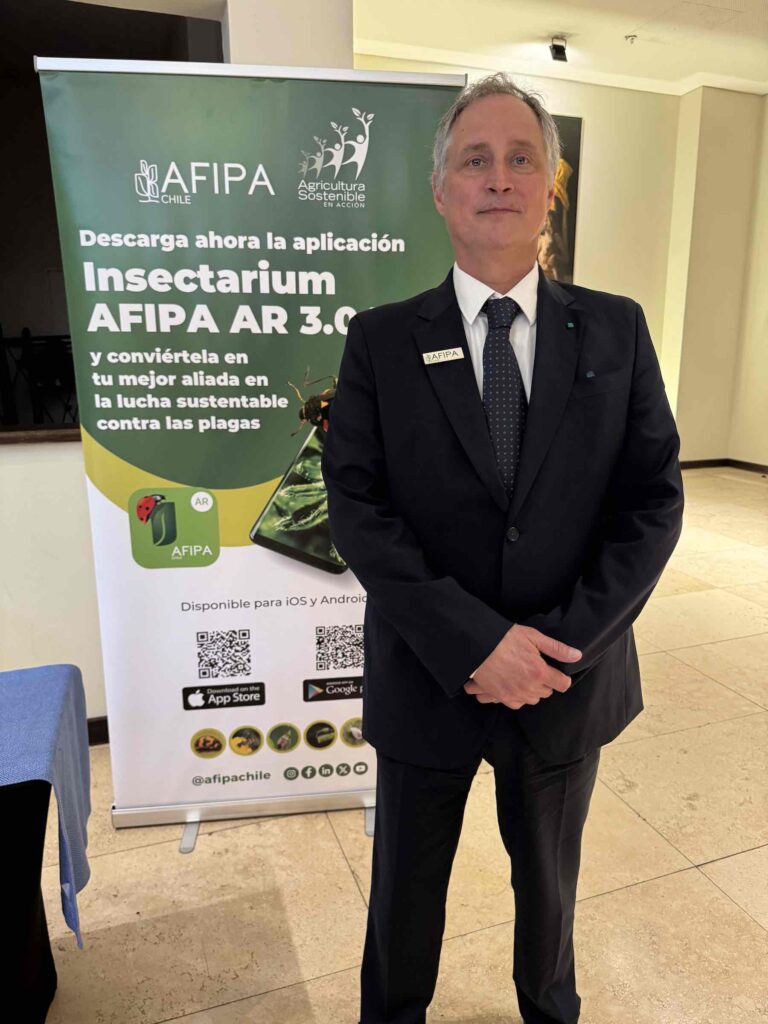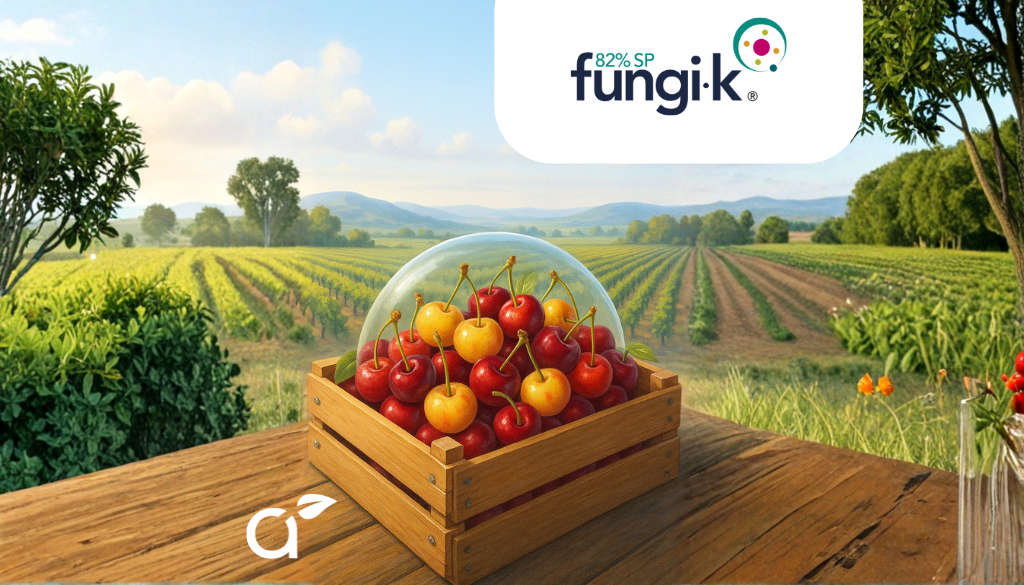Every season, cherry producers work tirelessly to achieve the same goal: to reach the highest productive potential of their orchards, with fruit of excellent quality, good color, size, good sugar levels, etc.
However, to achieve this goal, agronomic management is not always the same, as each year presents a different scenario; for example, during the 2022-23 season, many producers and our Avium technical team detected a greater presence of fruit abortion, which was related to the flow of carbohydrates that the fruit has to be retained in the plant.
It was a winter with a good amount of cold hours and in many cases dormancy breakers were used quite early, in order to leave earlier and reach the destination before the Chinese New Year. When there is enough cold hours or very good quality of cold, the trees naturally wake up early; an example of this was the flowering in Santina on September 12-14, which under normal conditions and in warm areas, occurs between September 20-25. That is, last year there was flowering ten days earlier than normal.
This scenario seemed like a gift in the middle of one of the narrowest commercial windows in the history of cherry exports in Chile; the fruits set well, but the spring was colder, with low temperatures for the season and the phenological states were approaching the dates of previous years, and the initial idea of an early year was forgotten. At the same time, the conditions were not present, in terms of degree days, to generate sugars via photosynthesis metabolism and the plant began to run out of “gasoline.” In one way or another, due to a lack of carbohydrates and competition from them, the fruit fell.
But why is this episode from last year being mentioned if the topic to be discussed is pruning and load regulation? Simply because the shock that many producers experienced in their orchards is a clear example of the different scenarios that can occur each season, where climatic factors play a fundamental role. So, it is necessary to keep in mind that the agronomic management that will be carried out in the orchard must be evaluated and not repeat, almost like a recipe, one or more of them.
Returning to the objective of every producer, pruning is presented as a fundamental task for the maintenance, renewal and optimal management of a cherry orchard; in addition, it is a strategy that, when used correctly, allows the productive potential of an orchard to be achieved; of course, it depends on the time of year in which it is carried out and under what conditions and objectives.
Load regulation is essential for obtaining good-sized fruit, and this type of pruning allows for unifying the size and distributing the sugar in the fruit. In addition, pruning is undoubtedly the best load regulator in cherry trees, the most efficient and cheapest.
Why prune or regulate load?
Controlling the fruit load of the cherry tree aims to renew its reproductive structures, a fundamental task to avoid an excess of fruit and thus a gradual weakening of the trees, which leads to a decrease in the quality of the fruit.
Now, before pruning and defining its intensity, together with the number of fruit shoots that should be left on the tree, it is important to take into account the variety/rootstock combination, the quality of the shoots that the tree has, how the fruit load was in the previous season, climatic conditions and the accumulation of cold during the period.
Another important factor to take into account is the analysis of bud fertility, which allows for the calculation and management of productive potential, being one of the most objective tools for knowing the load status of an orchard in a given season. It has become essential to incorporate techniques that enhance the size and firmness of the fruits, which is achieved mainly by regulating early load.

There are several types of load regulation, the main one being pruning, but thinning of reproductive structures such as shoots, buds, flowers and fruits is also relevant; the earlier it is done during the season, the more successful it will be from the point of view of the quality and condition of the fruit. The latter is the second most suitable method of load regulation.
Thus, the analysis of bud fertility is a tool that allows us to better demonstrate the reproductive state of the orchard at a given time of the season; it is a fundamental factor in deciding on the type and intensity of the load regulation techniques to be carried out; the results of this analysis will also provide clear data that will reinforce the idea raised at the beginning: all seasons are different.
It's pruning time
It never hurts to remember the concepts of pruning and load regulation. Therefore, below is a brief summary with definitions from our Avium technical team, as well as the most common procedures in the management of different structures.
1. Renewal pruning

The main objective of this work is to renew the “permanent” structure of the plant; that is, those branches that generate excess shade and that are no longer the main players in production, since they lack fruit centers. It should be noted that in many cases these structures are young, “suckers” with excess vigor that a future productive branch will not take advantage of.
It is important to consider that this type of material must be “removed” with a base “plug” in order to accommodate future renovations and avoid the loss of primary plant structures.
2. Branch pruning
This work involves intervening on one-year-old wood in winter, or less than one year if it is done green in spring/summer; its objective is to promote vegetative development just behind the cut section. This type of pruning allows for a “second wind” in the development of the new vegetative section, thus avoiding the endarden premature.
Although there are those who claim that this intervention of one-year-old twigs promotes “darkening”, it is necessary to clarify that this concept is erroneous and is even exactly the opposite.
3. Pruning or thinning branches.
It consists of intervening on branches in sections that are two years old or older, and seeks an early load adjustment, in order to be able to do without the excess of fruit centers. This intervention must be carried out just after a ring of change of year or in a section that generates self-support of branches.
The concept of self-supporting branches refers to the fact that the fruit contained in that section of branches is supported by its structure, ensuring vegetative development and generating a more regular result in terms of balance in fruit size and composition of sugars and nutrients.
4. Thinning or bud extinction

Also known as “Chinese thinning”, this strategy is by far the most effective, compared to thinning flowers and fruits that have already set. Its objective is to reduce the fruit load and, at the same time, ensure the vegetative balance of the plant. In addition, this type of thinning is the safest model for recovering stressed plants in a vicious circle of permanent weakness.
In order to carry out this strategy, it is essential to have the results of the bud fertility analysis, as it is an objective tool that will allow defining the intensity of the thinning of the buds. This is also associated with the fertility of the variety, rootstock, training system and also the vigor or weakness of the combination.
5.Thinning or extinguishing of darts
In cherry trees, the elimination of shoots becomes a huge mistake when defining thinning or load regulation strategies; although in other fruit species this practice is common and successful, in this particular species the elimination of a shoot is the irreversible loss of a fruiting point.
Why? In cherry trees, the shoot itself is the fruit structure that is renewable year after year, since it contains at least, and commonly, one vegetative bud that is responsible for generating leaves, and in its axils it houses new flower buds every season. Therefore, it should be considered that the only extinction of shoots that could be justified is that of a section of the ring at the change of year, in order to carry out a cut or reduction in this area.
Having reviewed the crop load regulation strategies, it only remains to reiterate the importance of being clear about the different scenarios that each season presents, even in the same orchard or plant; in light of this, bud fertility analyses are essential, since with these objective results it is possible to make concrete and correct decisions. It is also important to have the information on the fruit set projected according to the variety/rootstock combination and the historical information of each orchard, since this largely determines the different tasks that will be carried out (pruning, thinning, etc.).
On the other hand, it must be taken into account that to carry out any type of pruning or load regulation strategy, it is necessary to have an orchard in optimal conditions from a phytosanitary point of view, with its programs up to date, which will allow the success of the agronomic management described above.
Don't forget, too, that everything you do in the garden must be done with as much information as possible and always in line with the production objectives you are pursuing... It's time to ask yourself today what you are looking for for the next season.








